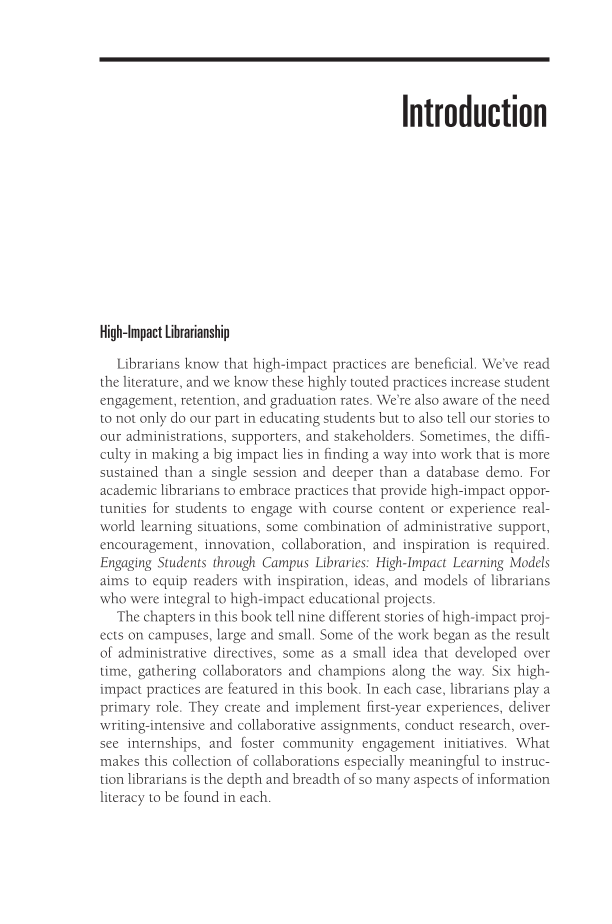Introduction High-Impact Librarianship Librarians know that high-impact practices are beneficial. We’ve read the literature, and we know these highly touted practices increase student engagement, retention, and graduation rates. We’re also aware of the need to not only do our part in educating students but to also tell our stories to our administrations, supporters, and stakeholders. Sometimes, the diffi- culty in making a big impact lies in finding a way into work that is more sustained than a single session and deeper than a database demo. For academic librarians to embrace practices that provide high-impact oppor- tunities for students to engage with course content or experience real- world learning situations, some combination of administrative support, encouragement, innovation, collaboration, and inspiration is required. Engaging Students through Campus Libraries: High-Impact Learning Models aims to equip readers with inspiration, ideas, and models of librarians who were integral to high-impact educational projects. The chapters in this book tell nine different stories of high-impact proj- ects on campuses, large and small. Some of the work began as the result of administrative directives, some as a small idea that developed over time, gathering collaborators and champions along the way. Six high- impact practices are featured in this book. In each case, librarians play a primary role. They create and implement first-year experiences, deliver writing-intensive and collaborative assignments, conduct research, over- see internships, and foster community engagement initiatives. What makes this collection of collaborations especially meaningful to instruc- tion librarians is the depth and breadth of so many aspects of information literacy to be found in each.
Document Details My Account Print multiple pages
Print
You have printed 0 times in the last 24 hours.
Your print count will reset on at .
You may print 0 more time(s) before then.
You may print a maximum of 0 pages at a time.





























































































































































































